9 Global Air Pollution
Air Pollution As A Global Concern
In 2019, PM 2.5-related health effects alone cost the world 8.1 trillion dollars. This is equivalent to about 6.1 percent of the global GDP. Additionally, almost the entire global population (99%) breathes air that contains high levels of pollutants. Not only is air pollution one of the leading risk factors for death globally, but it is also one of the leading causes of disease globally. Global disease burden considers not only years of life lost to death but also the number of years lived in poor health. 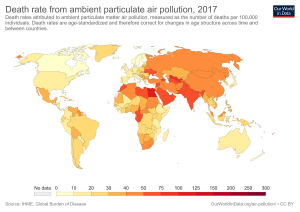 Global air pollution has been shown to affect different countries disproportionately, with many lower-income countries being affected the most. This is often due to a lower-income reliance on solid fuels for cooking that increases indoor air pollution. More than 40% of the world’s population does not have access to clean cooking fuels. This results in about 4 million premature deaths each year. Finally, air pollution contributes to climate change globally, which affects all the nations of the globe. As air pollution continues to get worse, there will only be a confounding of the health effects that are caused by pollution. That is why it is so imperative that the global powers work to mitigate air pollution and work to fix the damage that has been done. (A.B.)1,8,11,12
Global air pollution has been shown to affect different countries disproportionately, with many lower-income countries being affected the most. This is often due to a lower-income reliance on solid fuels for cooking that increases indoor air pollution. More than 40% of the world’s population does not have access to clean cooking fuels. This results in about 4 million premature deaths each year. Finally, air pollution contributes to climate change globally, which affects all the nations of the globe. As air pollution continues to get worse, there will only be a confounding of the health effects that are caused by pollution. That is why it is so imperative that the global powers work to mitigate air pollution and work to fix the damage that has been done. (A.B.)1,8,11,12
Climate Change
As stated in the previous section, one of the greatest effects of air pollution on the world is the exacerbation of climate change. NASA defines climate change as “a long-term change in the average weather patterns that have come to define Earth’s local, regional, and global climates.” Climate change is a global burden that affects every nation, though not on the same scale. The effects of climate change have a wide variety of impacts on the planet, including a warming of the atmosphere that leads to record high temperatures, melting of glacial ice that increases sea level, increased migration of species, as well as many other issues. Many factors can contribute to climate change, including volcanoes, earthquakes, dust storms, and meteorites, but the biggest contributor to climate change is anthropogenic air pollutants. An example of this would be carbon dioxide (CO2). CO2 can cause health effects to humans if inhaled, but it is also a long-lasting, climate-changing molecule. CO2 traps heat from the sun in the Earth’s atmosphere, warming the planet. Other air pollutants have double negative effects on human health as well as effects on the climate. These pollutants alter the Earth’s albedo, reduce stratospheric ozone formation, and impact atmospheric chemistry. The only way to effectively combat climate change is to reduce emissions. Luckily, it is effectively killing two birds with one stone; not only are there fewer air pollutants, but the climate will also recover. Reducing short-term air pollutants such as methane and hydrofluorocarbons would have dramatic benefits to the rate of climate impacts, while the world focuses on eliminating emissions of longer-lived pollutants.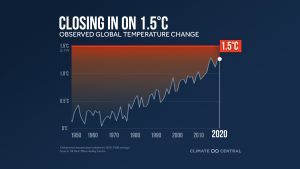
Mentioned briefly earlier, climate change does not affect all countries equally. Many coastal regions will feel the impacts the hardest due to sea level rise. Areas that are nearer the equator will also experience higher temperatures, which lead to an increased risk of heat-related illness. Finally, lower-income countries are often most affected by climate-driven changes as they cannot adapt their infrastructure to meet increasing demands due to climate-driven effects. The issue of climate change raises many questions about who should carry the burden of fixing it. (A.B.)24,25
Ethics Surrounding Global Regulation
Air Pollution is an active ethics issue since people cannot control their exposure to air pollutants and often have little ability to limit the concentration they are being exposed to. The burden of air pollution also often disproportionately affects those of lower socioeconomic status, as they are more often exposed to sources of pollution such as burning fuel in their own homes, traffic pollution, and industrial processes. Another factor that directly affects those of low-SES status is disproportionate placement of pollution sources near low-income neighborhoods. Large emitters often hold more political power/wealth that allows them to lobby against regulations. There are also major disappearances globally, as many lower-income countries are forced to make hard decisions. Fossil fuels are often a cheaper form of energy production than more expensive, less polluting sources, which pushes many developing countries to rely on coal or other dirty energy sources as major fuel sources.
Many times, the question is raised, who should pay to combat air pollution, and a couple of theories arise. One major theory is the polluter pay principle, where the largest polluters pay for the brunt of the costs to combat air pollution. This is an equal distribution of the burden, but is often not equitable for those lower-income countries that may not be able to invest in cleaner fuel sources.
Another proposal for who should carry the burden is the Ability-To-Pay Principle. For this, the burden of air pollution is borne by those with the greatest ability to pay. The argument being made here is that developed countries should carry most of the burden because of their greater wealth and capacity to act. This is an equitable approach, but it is hard to enact, as often those who can pay are those making the decisions in the first place.
The final principle that is brought to the table is the Development-Sensitive Polluter Pays Principle. The premise is that developing countries may not have the resources currently to divest in fossil fuels, but will be expected to take on the burden once they are more developed. This option seems the fairest as it not only expects those with more to provide but also sets the expectation that eventually every country will have to take ownership of the issue. Some downsides to this approach are that the developing country may agree and decide not to pay in when it is time. It is also hard to say when a country is developed enough.
Environmental Justice is a hard ethical conundrum with many possible answers, and it may be the case that many different principles are utilized by different polluters through global dealings. When looking at which principle to use, it does help to have an idea of the major emitters and the amount they are polluting. (A.B.)9,10,13
China: A Case Study
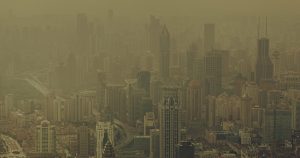
Air pollution is a global burden, and yet it is often only a few countries that are producing the bulk of emissions. Often, developing countries are some of the heaviest polluters as they have a rapidly increasing industrial sector that relies on dirty energy as they grow. This is because fossil fuels are much cheaper and readily available than green alternatives. After developing countries’ growth have plateaued, there is then a shift towards greener sources of energy as the country can afford an often more expensive alternatives. There are a variety of different metrics for assessing pollution. For instance, China is the top emitter of air pollution globally with 15,685 million tons of emissions in 2022, subsidiary, a whole 32.88% of CO2 emissions globally. If it were measured per capita, though, it would be seen that Palau was the largest per capita emitter of CO2 in 2022, even though their emissions only constituted 1.36 million tons. For reference, China emitted 11,533 times more carbon dioxide than Palau, but because their population size is so large, it makes it harder to make a comparison. (A.B)14
As already stated, the largest emitter of air pollution is by far China, which nearly doubles emissions of the second largest polluter, the US, and has almost 5 times the emissions of the third largest polluter, India. Why does China create so much air pollution? A couple reasons are because they have the second largest population in the world right under India, they also have extensive natural resources and depend on them for a large portion of their energy production, and finally, they are one of the world’s largest exporters of industry as shown by being the second highest global GDP under the United States. Additionally, China is the main exporter of refined petroleum and petroleum gas. Overall, this adds up to a per capita pollution of 8.85t CO₂/cap. China is working on reducing its air pollution levels, especially to improve its air quality. Between 2008 and 2015, 67% of the daily air quality indexes were at unhealthy levels or worse. The air is so bad that not only have schools been closing, but industries also are closing, and cars are being ordered to stay off the roads. The government has also declared a war on air pollutants. Expert Dr. Jim Zhang is a professor of global environmental health at Duke University and works in the US and China. Dr. Zhang talks in an interview with the BBC about his frustration with the worsening air quality after the huge effort to clean up the air for the Beijing Olympics. Dr. Zhang adds, “Women whose pregnancy was during those eight weeks of improved air quality had babies with a significantly higher birth weight, and we have a large database to show that in general, if your birth weight is higher, your later life is healthier.” His frustration stems from his research findings that support temporary interventions to improve air quality and reduce health effects. Despite China’s loss of temporary gains, there is a large push for green energy production. China has reduced its Fossil fuel usage from 2/3 of power generation to about half of all power generation. China is also the fastest-growing green energy producer, installing as much solar power as the rest of the world combined in 2022. In conclusion, China is a large emitter of air pollutants but is taking active steps to reduce its reliance on fossil fuels. (A.B.)14,15,22,23
Global Regulating Bodies For Air Pollution
- UNEP
The UNEP is the environmental protection branch of the United Nations. It was established in June of 1972 to inspire, inform, and enable nations and peoples to improve their quality of life. The organization works closely with all 193 Member States to address environmental challenges through the UN Environment Assembly, the world’s highest-level decision-making body on the environment. They achieve this by encouraging policies and investments that reduce risks from pollutants to both health and the environment. (A.B.)26
- WHO
The World Health Organization is a specialized agency of the United Nations that coordinates responses to international public health issues and emergencies. The WHO was founded in 1948 and creates global guidelines for health-related issues. Governance of the WHO takes place through the World Health Assembly. This is the supreme decision-making body for global health recommendations. The WHO also sets global daily exposure limits for air pollutants as well as creates recommendations for actions that should be taken to reduce emissions. (A.B.)27
When it comes to global regulation, there is a fundamental flaw with the way things are being governed currently. Both the WHO and the EPA give recommendations and guidelines, but there is little in the way of enforcement if a country does not abide by the guidelines. When it comes to international law, there are only a few avenues that hold any weight. (A.B.)28
The Difficulty In Enforcing Recommendations

The two pathways for international law are customs and treaties. Customs emerge when countries engage in certain practices in the belief that those practices are required by international law. These customary laws are comparable to the concept of a societal agreement. Essentially, every country is expected to follow these laws without any consent needed in the matter. On the other hand, treaties are formal agreements between countries to achieve a common goal. Treaties are often formed by multiple countries coming together with firm goals and deadlines on what needs to be done. Now, there is no international police agency enforcing these laws. Despite this, countries often comply with international law for a few reasons. Often, the countries taking part in these agreements did so to gain some benefit. Another reason is that countries found in violation of international law could be faced with sanctions from other abiding countries as well as other punitive measures. An example of a recent trade measure would be the embargoes on Russian oil sales due to the war in Ukraine. Even though punitive measures can be effective at correcting any unwanted behavior, they often have negative consequences for both sides and are not always effective. There have been several international laws in place concerning air pollution. (A.B.)28
Global Policy Surrounding Air Pollution
- Paris Agreement
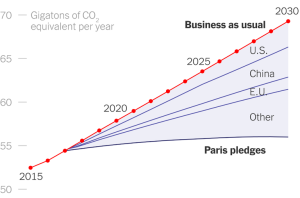
The Paris Agreement is a legally binding international treaty. It was adopted by 196 member nations at the UN climate change conference in Paris, France, in 2015. The overarching goal of the agreement is to keep the increase in the global average temperature to less than 2°C in change from pre-industrial temperatures. The treaty is also supposed to strive to keep changes below 1.5°C in change as research has found that even that amount would cause more frequent and severe droughts, heatwaves, and rainfall. To reflect this commitment, member countries are expected to submit Nationally Determined Contributions (NDCs) every 5 years. These NDCs are supposed to outline the actions member countries are taking/going to take to reach the expectations set in the agreement. The agreement also provides a structure of support for member countries. The support comes in financial and technical assistance as well as capacity building. The agreement sets the president that developed countries should financially support developing countries and encourages optional contributions by members. The second support measure is technological support. The agreement offers a technological mechanism that accelerates development through its policy and implementation arms. Finally, the agreement calls for increased capacity building in developing nations to combat climate-related challenges. While much change is still needed to hit the targets set in the Paris Agreement, by 2030, zero-carbon solutions could represent over 70% of global emissions. (A.B.)29
- Stockholm Convention
The Stockholm Convention is a global treaty designed to reduce persistent organic pollutants (POPs). POPs are chemicals that remain in the environment for long periods. They can also bioaccumulate in the fatty tissue of living organisms, becoming toxic to humans and wildlife. The treaty was signed by over 152 countries and ratified in May 2004. The treaty is understood best by its five core targets. The first of these is to eliminate the first 12 most dangerous POPs. The second objective is to switch from POPs to safer alternatives. The third objective is to target additional POPs after the worst 12 are eliminated. The fourth objective is to clean up old stockpiles of POPs as well as eliminate any equipment that contains it. The final objective of the treaty is to work together for a POPs-free future.
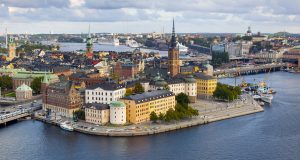
The final objective is quite simple and yet profound in its addition because it makes it plain that it is a global effort to keep the world healthy. The United Nations Industrial Development Organization is working to assist this effort by developing new industries and establishing recycling and waste management in a way that generates zero POPs emissions. Amendments are still being made to the original treaty, and there is still a great deal of work to be done to eliminate POPs. (A.B.)30,31
- Kyoto Protocol
The Kyoto Protocol is essentially a statement of acknowledgment of the United Nations Framework Convention on Climate Change. It works by committing industrialized countries to limiting and reducing greenhouse gases (GHG) under agreed individualized targets. The Kyoto Protocol sets firm emission reduction targets for 37 countries and the European Union. The treaty places the burden on developed countries because of the polluter pays principle, judging that the developed nations have caused much of the pollution. An important aspect of the protocol is the flexible market mechanisms. Countries must meet their targets primarily through national measures. However, there are also other means to meet individual targets. There are three additional ways that countries can meet their targets. 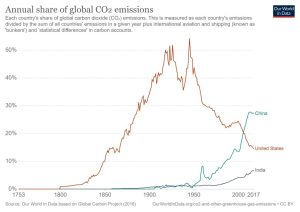 The first is International Emissions Trading. This allows countries that have exceeded their targets to sell any excess emissions to other countries, allowing them a greater capacity to pollute. The second mechanism is the Clean Development Mechanism (CDM). CDMs allow countries to earn certified emission reduction credits (CER) by implementing reduction programs in developing countries. These credits will go towards the targets of the individual country sponsoring the program. The final mechanism is Joint Implementation (JI). Very similar to the CDM, JI is a program that offers emission reduction units (ERUs, each equivalent to one ton of CO2) for sponsoring a program in another member country. This is a win-win approach where the sponsoring country is allowed more room to meet its target, and the host country benefits from foreign investment. While being a great plan of action, the plan does suffer the same issues any sort of global legislation does if not abided by. (A.B.)32
The first is International Emissions Trading. This allows countries that have exceeded their targets to sell any excess emissions to other countries, allowing them a greater capacity to pollute. The second mechanism is the Clean Development Mechanism (CDM). CDMs allow countries to earn certified emission reduction credits (CER) by implementing reduction programs in developing countries. These credits will go towards the targets of the individual country sponsoring the program. The final mechanism is Joint Implementation (JI). Very similar to the CDM, JI is a program that offers emission reduction units (ERUs, each equivalent to one ton of CO2) for sponsoring a program in another member country. This is a win-win approach where the sponsoring country is allowed more room to meet its target, and the host country benefits from foreign investment. While being a great plan of action, the plan does suffer the same issues any sort of global legislation does if not abided by. (A.B.)32
Overall, global air pollution is a tricky situation that requires countries to work together for the shared benefit of the entire world. Major issues when it comes to global air pollution concern who should carry the weight of the burden, as well as how countries that are major polluters will be held accountable. Politics is never an easy subject, and global politics is even worse, but nations across the globe are going to need to come together. There is only one spaceship Earth. (A.B.)
Reflection: From Aden B.
Aden Baldridge
What Always Wins
Do you like your towers in the sky?
When it crumbles down, nature won’t cry.
Do you ever wonder what will remain,
when you lie in the ground all the same?
You lined your pockets, built up a hoard,
but what use wealth, lain under a board.
Do you think your stone is set?
Whereupon the base weeds crept.
Do you think this glass building will last?
When nature erodes, so your stone fast.
You won the game of life, but that’s just it,
When the game ends, nature thrives.
I wrote that poem in high school when reflecting on the irreversible damage that is being done to the environment. I live on the Mississippi River and see firsthand the scale of pollution. When reflecting on air pollution, I think back to this last summer when the sky was covered in haze from the Canadian Wildfires. It was horrific how far the ash had traveled and the health effects it caused from its source. Now, after learning about the health consequences of air pollutants, I always cover my mouth when passing a bus. It is personally scary to think about the direction the world is headed in when it comes to air pollution and climate change. It is hard, especially to see it become a polarized issue when it should be a blatant middle-of-the-aisle issue. I think it is so hard for me because it is only common sense that we should be breathing cleaner air, and that industry needs to be regulated when it comes to how much pollution they are allowed to generate. Nevertheless, I have hope that the greater good will prevail in the long run, but I worry how many must die before we get there. (A.B.)
Finale Word Count: 5,221 words
-
“About WHO.” Who.int, World Health Organization, 2025, www.who.int/about.27
-
“Air Pollution.” World Health Organization, World Health Organization, 2024, www.who.int/health-topics/air-pollution#tab=tab_11
-
“Carbon Monoxide Poisoning Basics.” Carbon Monoxide Poisoning, 16 May 2024, www.cdc.gov/carbon-monoxide/about/index.html.4
-
“Chemicals and Pollution Action.” UNEP – UN Environment Programme, 12 Oct. 2023, www.unep.org/topics/chemicals-and-pollution-action.26
-
“China Air Pollution – Sources, Couses and Effects of This Problem – Airly WP | Air Quality Monitoring. Monitor in UK & Europe. Airly Data Platform and Monitors.” Airly.org, 2024, airly.org/en/air-pollution-in-china-what-causes-it/#why-do-china-greenhouse-gas-emissions-keep-rising.15
-
Currit, Elisabeth. “Disproportionate Exposure to Air Pollution for Low-Income Communities in the United States.” Ballard Brief, 2022, ballardbrief.byu.edu/issue-briefs/disproportionate-exposure-to-air-pollution-for-low-income-communities-in-the-united-states.10
-
“Does Radon Cause Cancer?” Www.cancer.org, American Cancer Society, 1 Nov. 2022, www.cancer.org/cancer/risk-prevention/radiation-exposure/radon.html.19
-
Fedak, Kristen. “Ethical Considerations in Air Pollution Exposure Assessment.” ISEE Conference Abstracts, vol. 2017, no. 1, Feb. 2018, p. 1177, https://doi.org/10.1289/isee.2017.2017-1177.9
-
Hagelberg, Niklas. “Air Pollution and Climate Change: Two Sides of the Same Coin.” UN Environment, 23 Apr. 2019, www.unep.org/news-and-stories/story/air-pollution-and-climate-change-two-sides-same-coin.24
-
Hilton, Isabel. “How China Became the World’s Leader on Renewable Energy.” Yale Environment 360, 13 Mar. 2024, e360.yale.edu/features/china-renewable-energy.23
-
“How Does Air Pollution Affect Climate Change? – the Environmental Literacy Council.” The Environmental Literacy Council, 26 Dec. 2024, enviroliteracy.org/how-does-air-pollution-affect-climate-change/.25
-
“Lead Poisoning and Health.” Who.int, World Health Organization: WHO, 27 Sept. 2024, www.who.int/news-room/fact-sheets/detail/lead-poisoning-and-health.17
-
“Learn about Lead.” US EPA, United States Environmental Protection Agency, 20 Aug. 2018, www.epa.gov/lead/learn-about-lead.16
-
Magraw, Daniel , and Janice Gorin. “Laws and Regulations, International – Effects, Environmental, Pollutants, United States, Types, Pesticide, Chemicals, Toxic, Human, Power, Sources, Use, Health, Oil, International Legal System.” Pollutionissues.com, 2014, www.pollutionissues.com/Ho-Li/Laws-and-Regulations-International.html.28
-
“Nitrogen Dioxide | Chemical Compound | Britannica.” Www.britannica.com, www.britannica.com/science/nitrogen-dioxide. Accessed 7 Feb. 2025.5
-
Page, Edward A. “Distributing the Burdens of Climate Change.” Environmental Politics, vol. 17, no. 4, Aug. 2008, pp. 556–575, doi.org/10.1080/09644010802193419, https://doi.org/10.1080/09644010802193419.13
-
“Particulate Matter (PM) Basics.” United States Environmental Protection Agency, 11 July 2023, www.epa.gov/pm-pollution/particulate-matter-pm-basics.2
-
“Radon | US EPA.” US EPA, 22 Apr. 2019, www.epa.gov/radon.18
-
Ritchie, Hannah, and Max Roser. “Air Pollution.” Our World in Data, Global Change Data Lab, Feb. 2024, ourworldindata.org/air-pollution.11
-
“Stockholm Convention – Home Page.” Pops.int, 2024, www.pops.int/Home/tabid/10001/Default.aspx.30
-
“Stockholm Convention | UNIDO.” Unido.org, 2017, www.unido.org/our-focus-safeguarding-environment-implementation-multilateral-environmental-agreements/stockholm-convention.31
-
Stumpf, Rob. “Here’s about How Many Cars Are There in the World in 2023.” The Drive, 17 Oct. 2023, www.thedrive.com/guides-and-gear/how-many-cars-are-there-in-the-world.3
-
“Sulfur Dioxide Basics | US EPA.” US EPA, 16 Feb. 2023, www.epa.gov/so2-pollution/sulfur-dioxide-basics.7
-
“Sulfur Dioxide | Definition, Sources, & Uses.” Encyclopedia Britannica, 2019, www.britannica.com/science/sulfur-dioxide.6
-
“The Paris Agreement Is a Health Agreement – WHO | UNFCCC.” Unfccc.int, 2018, unfccc.int/news/the-paris-agreement-is-a-health-agreement-who.12
-
UNFCCC. “The Paris Agreement.” United Nations Climate Change, United Nations, 2024, unfccc.int/process-and-meetings/the-paris-agreement.29
-
“Volatile Organic Compounds (VOCs) in Your Home – EH: Minnesota Department of Health.” State.mn.us, 2019, www.health.state.mn.us/communities/environment/air/toxins/voc.htm.20
-
Wang, S., Song, R., Xu, Z. et al. The costs, health and economic impact of air pollution control strategies: a systematic review. glob health res policy 9, 30 (2024). https://doi.org/10.1186/s41256-024-00373-y8
-
“What Are Volatile Organic Compounds (VOCs)?” US EPA, 19 Feb. 2019, www.epa.gov/indoor-air-quality-iaq/what-are-volatile-organic-compounds-vocs.21
-
“What Is China Doing to Tackle Its Air Pollution?” BBC News, 20 Jan. 2016, www.bbc.com/news/world-asia-china-35351597.22
-
“What Is the Kyoto Protocol?” UNFCCC, 2020, unfccc.int/kyoto_protocol.32
-
“What Is Ozone?” US EPA, 21 Mar. 2016, www.epa.gov/ozone-pollution-and-your-patients-health/what-ozone.19
-
World population review. “Pollution by Country 2020.” Worldpopulationreview.com, 2023, worldpopulationreview.com/country-rankings/pollution-by-country.14
